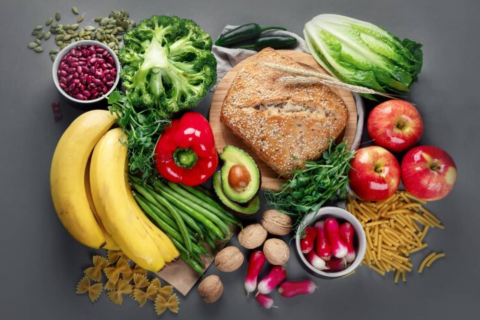Do heavy metals exist in our food?
Heavy metals can be found predominantly in rice-based foods and root vegetables, which happen to be popular in Asian dishes. While this may sound alarming, some heavy metals in our food sources are unavoidable. How can we practice responsible selection in our food to avoid excessive heavy metals?
Toxic metals like mercury are known as developmental neurotoxins, (Healthy Babies Bright Futures, 2019) which can harm developing brain and nervous system if overconsumed. This means that overconsumption may lead to a child’s learning abilities and behaviour suffering an impact. These include consequences such as permanent loss of intellectual capacity and behavioural problems like attention-deficit hyperactivity disorder (ADHD).

So what food can we then introduce to the rapidly growing bodies of our infants and toddlers? Let ELFA’s certified Nutritionist share more tips with you!
While rice-based food and root vegetables contain heavy metals, they too provide other essential nutrients. Heavy metals generally accumulate in a plant’s root, leaf and stem tissues. In contrast, fruit vegetables have lower levels of heavy metals. Considering these factors, we suggest blending fruit vegetables such as tomato, beans, bell peppers and zucchini in your child’s diet.
ELFA’s approach
ELFA’s infant menu replaced rice-based food with other grain cereals such as oatmeal, millet or multigrain. These food source continues to provide nutrients with lesser heavy metals compared to rice. At our centres, we offer a wide variety of fruits and vegetables to contribute to providing a balanced diet for the children.
With all that in mind, it is important to remember that variety and moderation are key. Here are some tips for parents when looking for food alternatives to avoid high levels of heavy metals in their child’s diet.
How can I plan my child’s meal?
When fixing up your child’s meals, choose to include various fruits and vegetables such as broccoli, cauliflower, cabbage, lettuce, capsicums, zucchini, avocado, papaya and banana. Remember also to choose grain cereals such as oats or quinoa, which are not rice-based, when purchasing infant cereals.
Grind the oats to obtain a fine texture, then mix with either warm breast milk or formula milk to soften it. You can top it up with fruit puree and season with nutmeg for additional taste and nutrition! For yummy savoury oats, use ingredients such as egg, mushroom and spinach.
For snacks, consider soothing natural foods like cold bananas or cucumbers instead of commercial teething snacks. Alternatively, prepare delicious steamed apple puree or crunchy oven-baked apple slices. Expand their palates and enhance the snack flavour naturally by using spices like cinnamon. Steamed or baked sweet potato fries make a mouth-watering option for a nutritious snack too.
For drinks, serve plain water or give the child a freshly squeezed diluted fruit juice instead of commercial juices. Commercial juices contain traces of toxic heavy metals and added sugar content. Diluting the fresh juices helps ensure your child consume lesser sugar (including natural sugar) and more water. You can consider offering your child sliced fruits to gnaw on as whole fruits are more nutritious than juices.

In conclusion, there is no reason to be overly alarmed as heavy metals in food are not entirely avoidable. Reduce your child’s exposure by feeding in variety and moderation to lower the amount of toxic metals in your child’s diet for healthier growth!
Note: Please take into consideration your child’s allergies during food preparation
References:
https://www.aappublications.org/news/2021/05/01/parentplus-babyfoodmetal050121






Give your Opinions